We are heading for the Upper West Side of Run. One of the Spice Islands, Run is just 3km long, ringed with perfect white sandy beaches. It’s forested with spice trees, and nutmeg, cloves and cinnamon grow in lush abundance. Back in the late 1600s, Run was considered so valuable that the English were happy to swap it with the Dutch for another island, on the other side of the world. Its name? Manhattan.
We beguile our time with snorkelling while waiting for the tides to be right. The islands in these parts are volcanic, so shallow coastal shelves suddenly drop off to inky depths. Even at high tide, we skim in our dinghy just a hand-width above bright blue starfish and glistening sea cucumbers on the sea bed. It has taken me almost three days and 13,000km to get here, and it has been worth every minute.
I have had it easy. Once upon a time, the journey took months, only manageable on the monsoon winds, and you would consider yourself lucky to make it back alive. Scurvy, shipwrecks and pirates were significant risks, but in the 1600s, as the Great Plague was sweeping London, it was believed that nutmeg could, if not cure the Black Death, at least stave it off. Profits for those who invested in or captained successful spice ships were as much as 1,000 per cent.
Stories like these ring in my ears as we climb the precipitous steps cut into the rock to reach Run’s higher forest. The island’s main street has been carpeted with cloves, drying on sheets held down with stones, but up here, the nutmegs are fresh, plucked with special bamboo tools, or on the ground in a slew of spicy windfalls. Cinnamon is carved from tree bark, but nutmegs are to be found at the heart of fruit, the kernel protected with glossy red mace, and then by a pith that is sugared and made into sweets.
READ MORE
For centuries, Chinese and Arab traders brought spices from Run and its fellow Spice Islands, exchanging them for food, cloth and gold. Then the Europeans came, built forts, and began bloodthirsty campaigns for dominance. All this history lingers. It is there in the forts they left behind, and in uncomfortable colonial legacies to be learned in spots such as the Museum on Banda Neira. Today the inhabitants of Run mainly make their living from spice and fish, and the atmosphere is relaxed, laid back and welcoming.
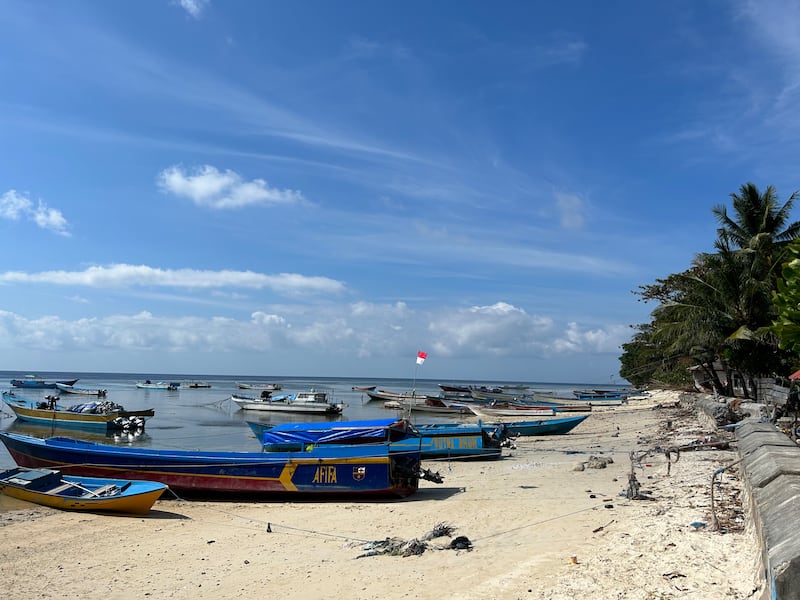
There are no hotels on Run, although there are one or two homestay spots. We have come here on board the Ombak Putih, and it is difficult to imagine a more beautiful ship. Sleeping a maximum of 24, plus a crew of 12, Ombak Putih (her name translates as White Wave) is an Indonesian Pinisi, a traditional wooden boat whose seven sails are ranged across two masts, and drive us at surprising speed when the wind gets up. Our 12 days on board will take us across the Ceram Sea, through the Spice Islands, also known as the Moluccas, and to petrified lava flows beneath turquoise waters, hot springs, lush tropics and distant deserted islands. Dolphins will accompany us, while whales blow bursts of water on the horizon.
We will jump in off the bows at the Equator, and later invent cocktails to toast Neptune and celebrate the event. We will meet huge golden butterflies after following a winding jungle trail, and eat fresh fish bought direct from a canoe that comes alongside as we anchor in a beautiful bay. We will snorkel unspoiled reefs teeming with arabesques of exotic fish, and glide by huge mangroves whose roots send up spiked branches to gasp at unsalted oxygen from the air. As we swim near the mangrove shore, local children follow us in their carved out canoes. I mime how strong they are to row, and they raise their hands to show their muscles in reply before bursting into delighted gales of laughter. Some of the islands we visit will get fewer than 100 tourists a year.
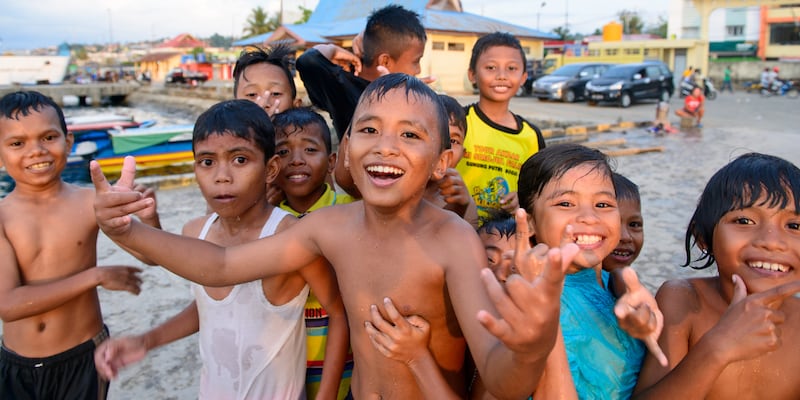

Our itinerary traces the footsteps of Alfred Russel Wallace. A 19th century naturalist, Wallace came up with the idea of the survival of the fittest as the missing element of the theory of the Origin of Species by Natural Selection. He sent his findings to Charles Darwin, who had been procrastinating while finishing his own book on the subject. Survival of the fittest had come to Wallace during a malarial fever dream in Dodinga, and debates about who should take the major credit for the Origin theories continue to this day. Wallace was also one of the first to write about how the actions of travellers can harm the balance of nature, although he would fund his own journeys by sending thousands of specimens home for sale to avid collectors.
[ The best holidays for solo travellers - and no single supplementOpens in new window ]
Dodinga is a small village where, today, the petrol station is a small wooden shelf by the roadside containing plastic water bottles filled with diesel, together with a funnel and an oily rag. The local children run to welcome us as we walk the path from the harbour. They are holding hands and laughing with glee at my attempts at their language. Wallace was also fascinated by the Bird of Paradise, which used to be abundant in these parts. The first Bird of Paradise specimen to make it back to Europe was missing its feet, so people decided it never landed, and so the legend of the phoenix was born.
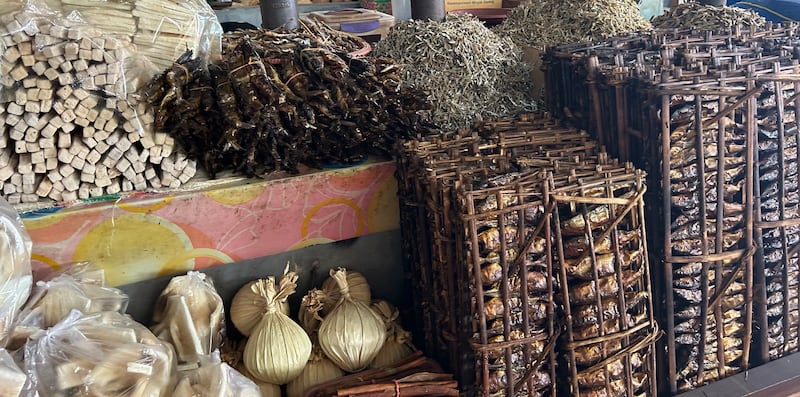
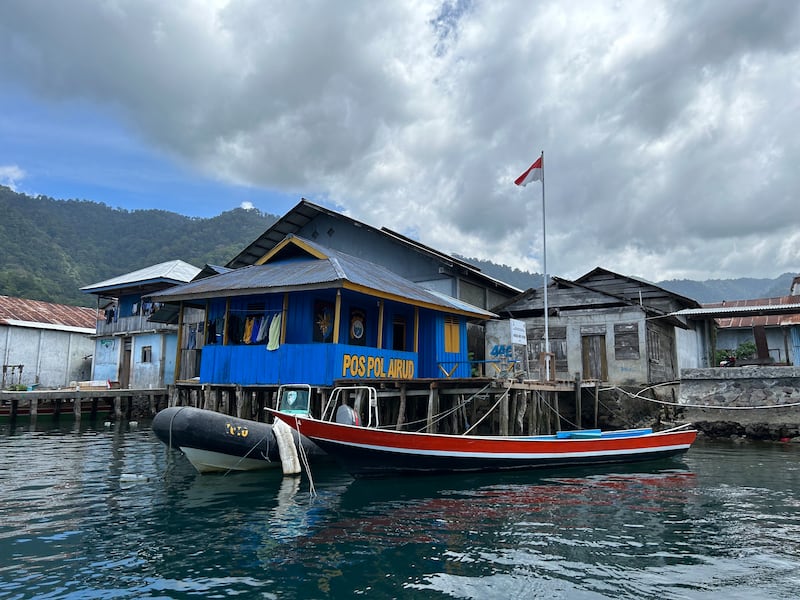
On Tidore island, the police station at the harbour has laundry hanging out to dry. No dirty cops here we joke, delighted with ourselves. We go to see knives being made from scrap metal in a thrilling and balletic beating of glowing steel, and I buy betel nuts in the colourful local market that will have gone mouldy long before I think to try them at home. We also see sago bread being made. It is long lived (it keeps for up to a year) and totally tasteless. Avocado added, fresh from the tree, helps hugely. We eat Durian. It smells vaguely like rotting leeks and tastes unpleasant in an almost indescribable way. Wallace, I am told, loved it.
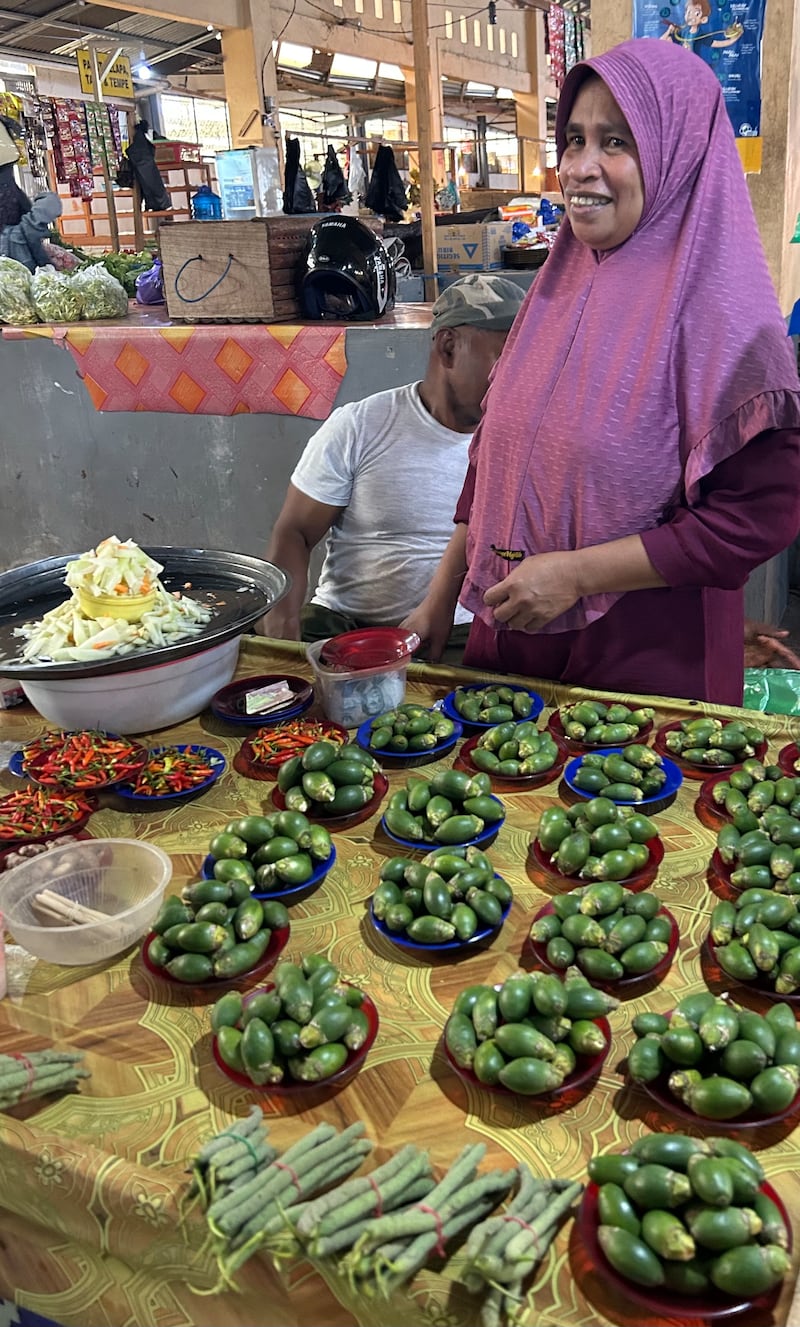
We are a mixed group. There is an adventurous photographer from Australia, a Malaysian/English couple who are in scientific publishing, and another pair of Australians who do yoga and make us laugh with their dry wit. An American doctor, now retired, looks a lot like Ernest Hemingway, and is here with his wife who discovered a love for Irish mythology while studying in New York.
[ Singapore is a marvel of the gastronomic worldOpens in new window ]
We even have an evolutionary biologist on board to spice up our discoveries. George Beccaloni gives talks and shows films each evening, just after sunset and before dinner – fresh fish, delicately spiced meats, exotic vegetables and succulent fruits – is served out on deck in the warm night. Through Beccaloni’s eyes, we learn more about the extraordinary sea creatures we meet each day while snorkelling. The corals in these parts are the best I have ever seen, and the marine life astonishing in its abundance. Tinae and Dion from the brilliant Ombak Putih crew join in our snorkelling trips, helping the less intrepid, and pointing out the more exotic species to those who dare to dive a little deeper.
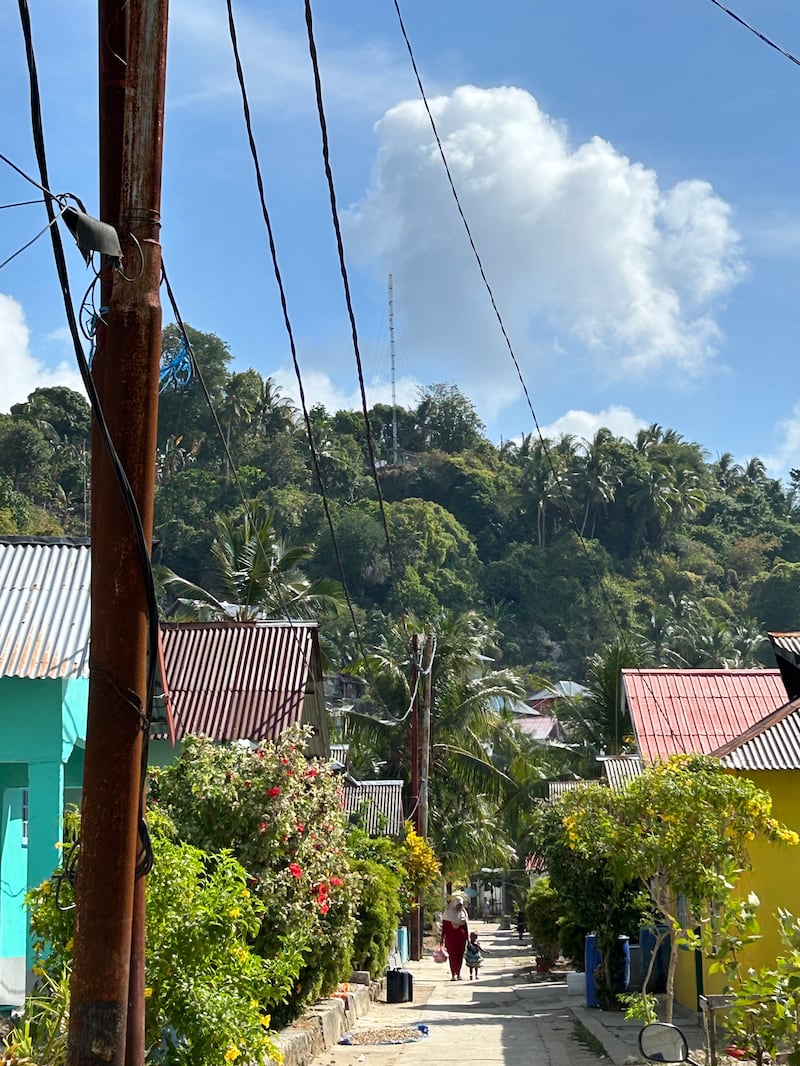
At night, my dark-wood cabin is snug but very well appointed. It creaks gently, as if the ship is whispering. Initially I am tentative, the stairs to the cabins seem precipitous, and the guard rails low. But my sea legs come quickly and very soon it feels like this is forever. Given the nature of winds and tides, the itinerary is not set, so it is announced each evening after dinner. We have stayed an extra night in Ambon due to a storm, and so, skipping Ai, we have gone straight to Run. All this lends a delicious layer of spontaneity to the adventure, and because tomorrow is as yet unknown, I find myself fully living in today.
[ ‘The excitement and desire to travel are back in full force’Opens in new window ]
And yet, among all this beauty, in the wonderful company, and sated with amazing food, I find myself becoming increasingly, if not angry, then definitely perturbed. It is the colonial thing. Books such as Giles Milton’s Nathaniel’s Nutmeg (published in 1999) tell the story of the islands, and of Run in particular, as if their history only matters in relation to the Europeans who wanted them so badly. For starters, it wasn’t Nathaniel Courthope’s nutmeg – but this, and many similar tomes, tend to speak of the savagery of the locals, and the bravery of the invaders. The best books I found, before and after my trip, have been Tim Severin’s the Spice Islands Voyage, and Lawrence and Lorne Blair’s Ring of Fire, based on the brothers’ journeys in the 1970s.
“Short term thinking” says one of my fellow passengers, comparing the relative values of Manhattan and Run today. But Manhattan must once have been as beautiful as this place, when it still had its forests and its unpolluted waters. I imagine the extremes of poverty at the heart of New York, the dirt, the struggle to survive for all save the ultra wealthy, and I think he’s right, just not the way he thinks. After dinner, I go up to the top deck to watch the moon and stars dip and rise as we sail on. From below, I can hear the crew playing guitar and singing quietly for themselves. And just then, when it couldn’t get more perfect, a shooting star seals the deal.
Getting there
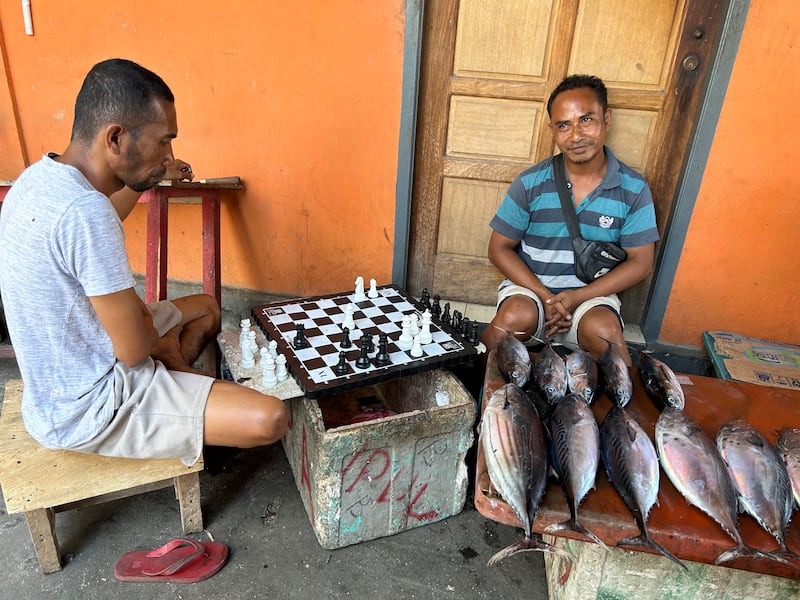
Your SeaTrek itinerary may start from a different part of the archipelago, but Emirates will get you to most hub airports in Indonesia with flights from Dublin via Dubai. Emirates economy class return flights from Dublin to Jakarta start from €962, emirates.com. The SeaTrek team will assist with booking internal flights, which are regular and relatively inexpensive with Lion Air or Batik Air, lionair.co.id.
It is useful to have currency with you, as taxis may not take cards. All international visitors to Indonesia require a visa. You can purchase this at a well-signed desk on arrival at a cost of 500,000 Indonesian Rupiah (€30), before queuing again for passport control. In Jakarta, the cash-only queue was shorter, and there are ATMs near the desks. Or purchase your Visa on Arrival (VOA) online in advance at molina.imigrasi.go.id.
Sailing on the Ombak Putih
There is no wifi on the Ombak Putih. Some of my fellow passengers picked up signals in sight of the more populated islands, but I took the SeaTrek advice and turned my phone off entirely for 12 glorious days of escapist bliss. Highly recommended.
Speaking of bliss, sundowners on board are a lovely custom. Local Bintang beer is cheap and refreshing, but spirits are relatively expensive in Indonesia, including on board. The team at SeaTrek recommend buying your favourite in the Duty Free for the voyage – you can bring up to a litre per person into Indonesia. A mini printer on board spits out your name so that no one else dips in, but I didn’t have it in me to be so exclusive, and instead wrote “Gemma – happy to share”, which was possibly a tactical error as it had run out long before we got to the Equator, despite everyone being incredibly nice and asking first…
Travel in paradise: what to bring
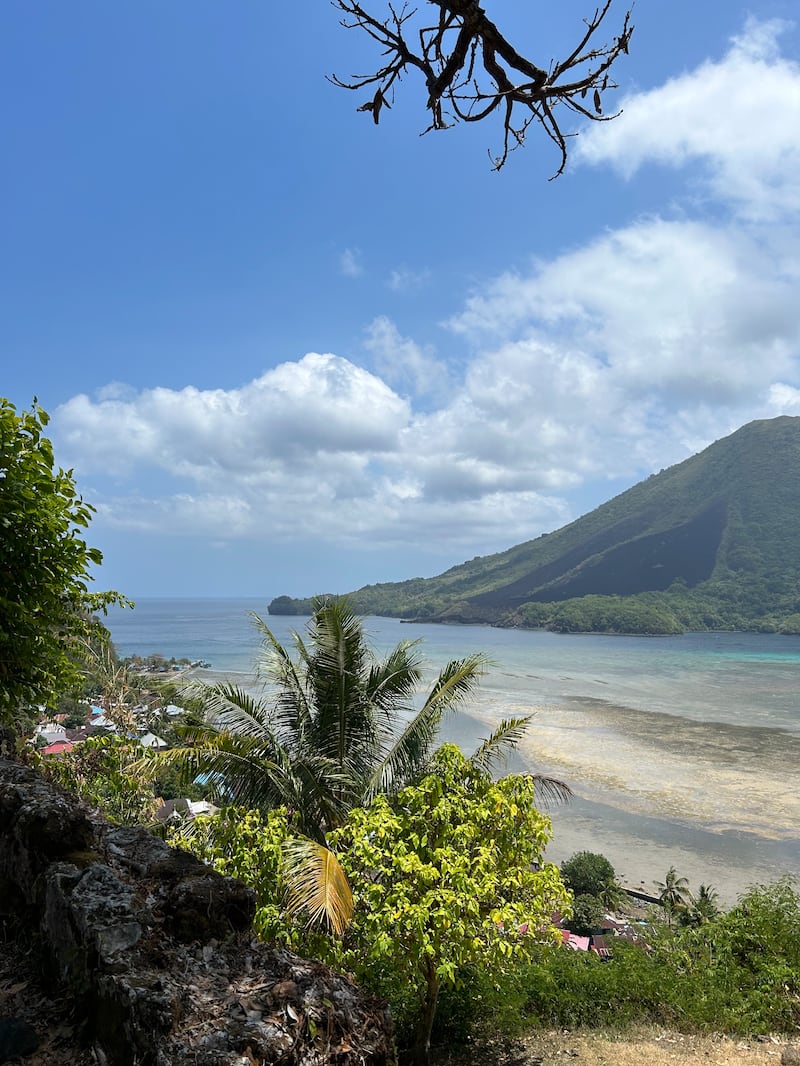
Your cabin will be equipped with bathroom and beach towels; plus sarongs and water bottles which are gifts to bring home with you. Snorkel gear is given to all passengers for the duration, and reef-safe sunscreen is also available. Plug sockets in the cabins are Continental Europe-style two-pin.
Bring a sun hat or cap, swim shoes, and a UV swim shirt to save your skin. Depending on your complexion, you may also want to add UV swim leggings. As some of the shore visits are to predominantly Muslim islands, pack some long-sleeved tops and long skirts or trousers.
While a great deal of time is spent on board, mosquitoes can be an issue, especially on jungle walks. Repellent spray is available on board, but if you do get bitten, bug bite heat pens are a game-changer. The Beurer BR10 (about €25 on Amazon) delivers a short sharp burst of heat to the affected area, and hey presto, no itch.
Gemma Tipton travelled as a guest of SeaTrek Sailing Adventures. The next 12-day SeaTrek To The Scents Of The Spice Islands (Ambon-Ternate) cruise departs on September 20th, 2024, and costs from €9,267pps. Price includes full board cruise, fuel surcharge and all airport transfers, but excludes international and domestic flights, crew tips, and alcoholic drinks. Find this, and further itineraries of different durations at seatrekbali.com/spice, or email Michael Travers at michael@seatrekbali.com.




















